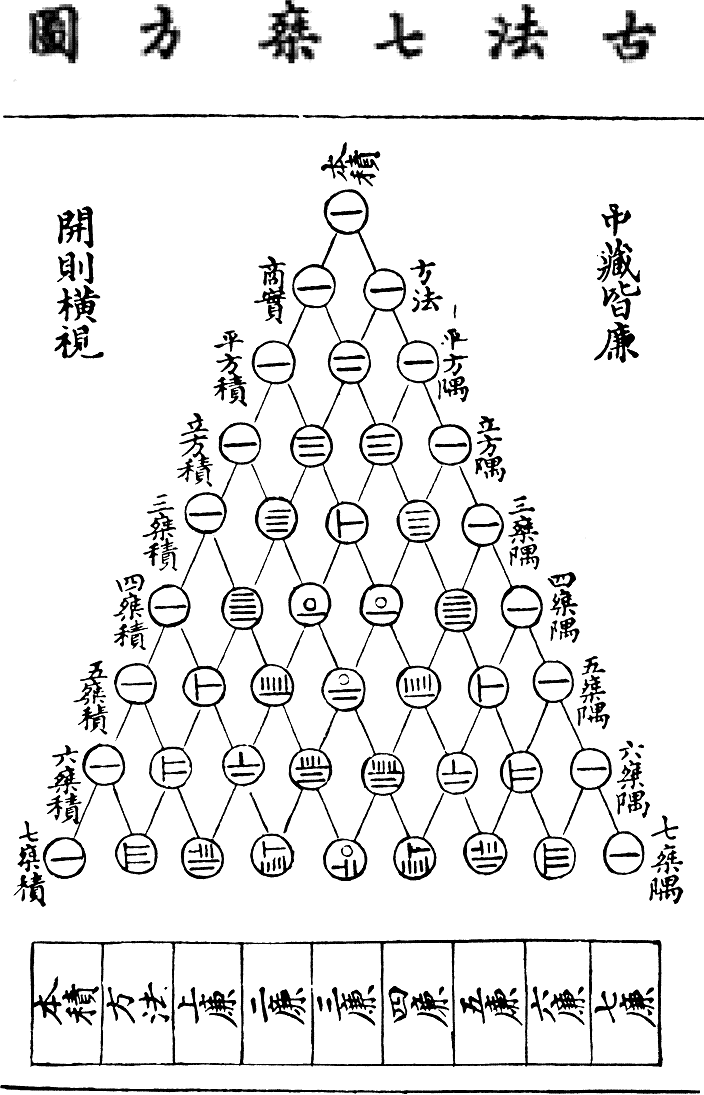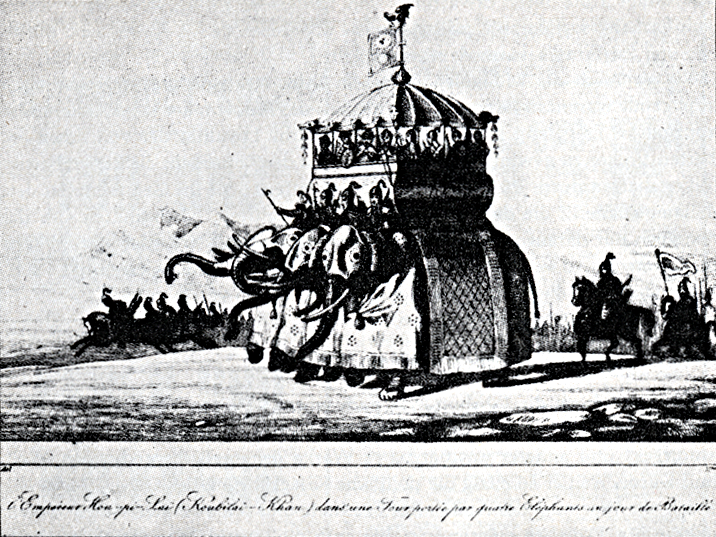|
Li Zhi (mathematician)
Li Ye (; 1192–1279), born Li Zhi (), courtesy name Li Jingzhai (),Breard, Andrea. (Jan 01, 2021).Li Ye: Chinese mathematician. ''Encyclopaedia Britannica''. Accessed 7 February 2021.Li, Ye (1192-1279) 李, 冶 (1192-1279) IdRef: ''Identifiants et Référentials pour l'enseignement supérieur et la recherche'' (French). Accessed 19 February 2018. was a Chinese mathematician, politician, and writer who published and improved the method for solving s of one variable. [...More Info...] [...Related Items...] OR: [Wikipedia] [Google] [Baidu] |
Li (surname 李)
Li or Lee (; ) is a common Chinese surname, it is the 4th name listed in the famous ''Hundred Family Surnames.'' Li is one of the most common surnames in Asia, shared by 92.76 million people in China, and more than 100 million in Asia. It is the List of common Chinese surnames, second-most common surname in China as of 2018, the second-most common surname in Hong Kong, the most common surname in Macau and the 5th most common surname in Taiwan, where it is usually romanized as "Lee". The surname is pronounced as () in Cantonese, ''Lí'' (Pe̍h-ōe-jī, poj) in Taiwanese Hokkien, but is often spelled as "Lee" in Hong Kong, Macau, Taiwan, Thailand and many overseas Chinese communities. In Macau, it is also spelled as "Lei". In Indonesia it is commonly spelled as "Lie". The common Korean name#Family names, Korean surname, "Lee (Korean surname), Lee" (also romanized as "I", "Yi", "Ri", or "Rhee"), and the Vietnamese name#Family name, Vietnamese surname, "Lý (Vietnamese name), Lý", a ... [...More Info...] [...Related Items...] OR: [Wikipedia] [Google] [Baidu] |
Henan
Henan; alternatively Honan is a province in Central China. Henan is home to many heritage sites, including Yinxu, the ruins of the final capital of the Shang dynasty () and the Shaolin Temple. Four of the historical capitals of China, Luoyang, Anyang, Kaifeng and Zhengzhou, are in Henan. While the province's name means 'south of the river', approximately a quarter of the province lies north of the Yellow River. With an area of , Henan covers a large part of the fertile and densely populated North China Plain. Its neighboring provinces are Shaanxi, Shanxi, Hebei, Shandong, Anhui, and Hubei. Henan is China's third-most populous province and the most populous among inland provinces, with a population of over 99 million as of 2020. It is also the world's seventh-most populous administrative division; if it were a country by itself, Henan would be the 17th-most populous in the world, behind Egypt and Vietnam. People from Henan often suffer from regional discrimination ... [...More Info...] [...Related Items...] OR: [Wikipedia] [Google] [Baidu] |
Polynomial Equation In Tian Yuan Shu With Arabic Numerals
In mathematics, a polynomial is a mathematical expression consisting of indeterminates (also called variables) and coefficients, that involves only the operations of addition, subtraction, multiplication and exponentiation to nonnegative integer powers, and has a finite number of terms. An example of a polynomial of a single indeterminate is . An example with three indeterminates is . Polynomials appear in many areas of mathematics and science. For example, they are used to form polynomial equations, which encode a wide range of problems, from elementary word problems to complicated scientific problems; they are used to define polynomial functions, which appear in settings ranging from basic chemistry and physics to economics and social science; and they are used in calculus and numerical analysis to approximate other functions. In advanced mathematics, polynomials are used to construct polynomial rings and algebraic varieties, which are central concepts in algebra and algebrai ... [...More Info...] [...Related Items...] OR: [Wikipedia] [Google] [Baidu] |
Polynomial Equation With Rod Numerals
In mathematics, a polynomial is a mathematical expression consisting of indeterminates (also called variables) and coefficients, that involves only the operations of addition, subtraction, multiplication and exponentiation to nonnegative integer powers, and has a finite number of terms. An example of a polynomial of a single indeterminate is . An example with three indeterminates is . Polynomials appear in many areas of mathematics and science. For example, they are used to form polynomial equations, which encode a wide range of problems, from elementary word problems to complicated scientific problems; they are used to define polynomial functions, which appear in settings ranging from basic chemistry and physics to economics and social science; and they are used in calculus and numerical analysis to approximate other functions. In advanced mathematics, polynomials are used to construct polynomial rings and algebraic varieties, which are central concepts in algebra and algebraic ... [...More Info...] [...Related Items...] OR: [Wikipedia] [Google] [Baidu] |
Rod Numeral
Counting rods (筭) are small bars, typically 3–14 cm (1" to 6") long, that were used by mathematicians for calculation in ancient East Asia. They are placed either horizontally or vertically to represent any integer or rational number. The written forms based on them are called rod numerals. They are a true positional numeral system with digits for 1–9 and a blank for 0, from the Warring states period (circa 475 BCE) to the 16th century. History Chinese arithmeticians used counting rods well over two thousand years ago. In 1954, forty-odd counting rods of the Warring States period (5th century BCE to 221 BCE) were found in Zuǒjiāgōngshān (左家公山) Chu Grave No.15 in Changsha, Hunan. In 1973, archeologists unearthed a number of wood scripts from a tomb in Hubei dating from the period of the Han dynasty (206 BCE to 220 CE). On one of the wooden scripts was written: "当利二月定算𝍥". This is one of the earliest examples of using counting-rod numeral ... [...More Info...] [...Related Items...] OR: [Wikipedia] [Google] [Baidu] |
Right Triangle
A right triangle or right-angled triangle, sometimes called an orthogonal triangle or rectangular triangle, is a triangle in which two sides are perpendicular, forming a right angle ( turn or 90 degrees). The side opposite to the right angle is called the '' hypotenuse'' (side c in the figure). The sides adjacent to the right angle are called ''legs'' (or ''catheti'', singular: '' cathetus''). Side a may be identified as the side ''adjacent'' to angle B and ''opposite'' (or ''opposed to'') angle A, while side b is the side adjacent to angle A and opposite angle B. Every right triangle is half of a rectangle which has been divided along its diagonal. When the rectangle is a square, its right-triangular half is isosceles, with two congruent sides and two congruent angles. When the rectangle is not a square, its right-triangular half is scalene. Every triangle whose base is the diameter of a circle and whose apex lies on the circle is a right triangle, with the right angle at ... [...More Info...] [...Related Items...] OR: [Wikipedia] [Google] [Baidu] |
Ceyuan Haijing
''Ceyuan haijing'' () is a treatise on solving geometry problems with the algebra of Tian yuan shu written by the mathematician Li Zhi in 1248 in the time of the Mongol Empire. It is a collection of 692 formula and 170 problems, all derived from the same master diagram of a round town inscribed in a right triangle and a square. They often involve two people who walk on straight lines until they can see each other, meet or reach a tree or pagoda in a certain spot. It is an algebraic geometry book, the purpose of book is to study intricated geometrical relations by algebra. Majority of the geometry problems are solved by polynomial equations, which are represented using a method called tian yuan shu, "coefficient array method" or literally "method of the celestial unknown". Li Zhi is the earliest extant source of this method, though it was known before him in some form. It is a positional system of rod numerals to represent polynomial equations. ''Ceyuan haijing'' was first introd ... [...More Info...] [...Related Items...] OR: [Wikipedia] [Google] [Baidu] |
Hanlin Academy
The Hanlin Academy was an academic and administrative institution of higher learning founded in the 8th century Tang China by Emperor Xuanzong in Chang'an. It has also been translated as "College of Literature" and "Academy of the Forest of Pencils." Membership in the academy was confined to an elite group of scholars, who performed secretarial and literary tasks for the court. One of its primary duties was to decide on an interpretation of the Chinese classics. This formed the basis of the Imperial examinations, which aspiring government bureaucrats had to pass to attain higher-level government posts. Painters working for the court were also attached to the academy. Academy members Some of the more famous academicians of Hanlin were: * Li Bai (701–762) – Poet * Bai Juyi (772–846) – Poet * Su Shi (1037 – 1101) – Poet * Yan Shu (991–1055) – Poet, calligrapher, (prime minister, 1042) * Ouyang Xiu (1007–1072) – Historian * Shen Kuo (1031–1095) – Chancel ... [...More Info...] [...Related Items...] OR: [Wikipedia] [Google] [Baidu] |
Khan (title)
Khan (, , ) is a historic Turkic peoples, Turkic and Proto-Mongols, Mongolic title originating among nomadic tribes in the Eurasian Steppe#Divisions, Central and Eastern Eurasian Steppe to refer to a king. It first appears among the Rouran and then the Göktürks as a variant of khagan (sovereign, emperor) and implied a subordinate ruler. In the Seljuk Empire, Seljük Empire, it was the highest noble title, ranking above malik (king) and emir (prince). In the Mongol Empire it signified the ruler of a Orda (organization), horde (''ulus''), while the ruler of all the Mongols was the khagan or great khan. It is a title commonly used to signify the head of a Pashtun Pashtun tribes, tribe or clan. The title subsequently declined in importance. During the Safavid Iran, Safavid and Qajar Iran, Qajar dynasty it was the title of an army general high noble rank who was ruling a province, and in Mughal Empire, Mughal India it was a high noble rank restricted to courtiers. After the downfal ... [...More Info...] [...Related Items...] OR: [Wikipedia] [Google] [Baidu] |
Genghis Khan
Genghis Khan (born Temüjin; August 1227), also known as Chinggis Khan, was the founder and first khan (title), khan of the Mongol Empire. After spending most of his life uniting the Mongols, Mongol tribes, he launched Mongol invasions and conquests, a series of military campaigns, conquering large parts of Mongol conquest of China, China and Mongol invasion of Central Asia, Central Asia. Born between 1155 and 1167 and given the name Temüjin, he was the eldest child of Yesugei, a Mongol chieftain of the Borjigin, Borjigin clan, and his wife Hö'elün. When Temüjin was eight, his father died and his family was abandoned by its tribe. Reduced to near-poverty, Temüjin killed Behter, his older half-brother to secure his familial position. His charismatic personality helped to attract his first followers and to form alliances with two prominent Eurasian Steppe, steppe leaders named Jamukha and Toghrul; they worked together to retrieve Temüjin's newlywed wife Börte, who had b ... [...More Info...] [...Related Items...] OR: [Wikipedia] [Google] [Baidu] |
Kublai Khan
Kublai Khan (23 September 1215 – 18 February 1294), also known by his temple name as the Emperor Shizu of Yuan and his regnal name Setsen Khan, was the founder and first emperor of the Mongol-led Yuan dynasty of China. He proclaimed the dynastic name "Great Yuan" in 1271, and ruled Yuan China until his death in 1294. Kublai was the second son of Tolui by his chief wife Sorghaghtani Beki, and a grandson of Genghis Khan. He was almost 12 when Genghis Khan died in 1227. He had succeeded his older brother Möngke as Khagan in 1260, but had to defeat his younger brother Ariq Böke in the Toluid Civil War lasting until 1264. This episode marked the beginning of the division of the Mongol Empire. Kublai's real power was limited to the Yuan Empire, even though as Khagan he still influenced the Ilkhanate and, to a significantly lesser degree, the Golden Horde. In 1271, Kublai established the Yuan dynasty and formally claimed orthodox succession from prior Chinese dynasties. ... [...More Info...] [...Related Items...] OR: [Wikipedia] [Google] [Baidu] |







